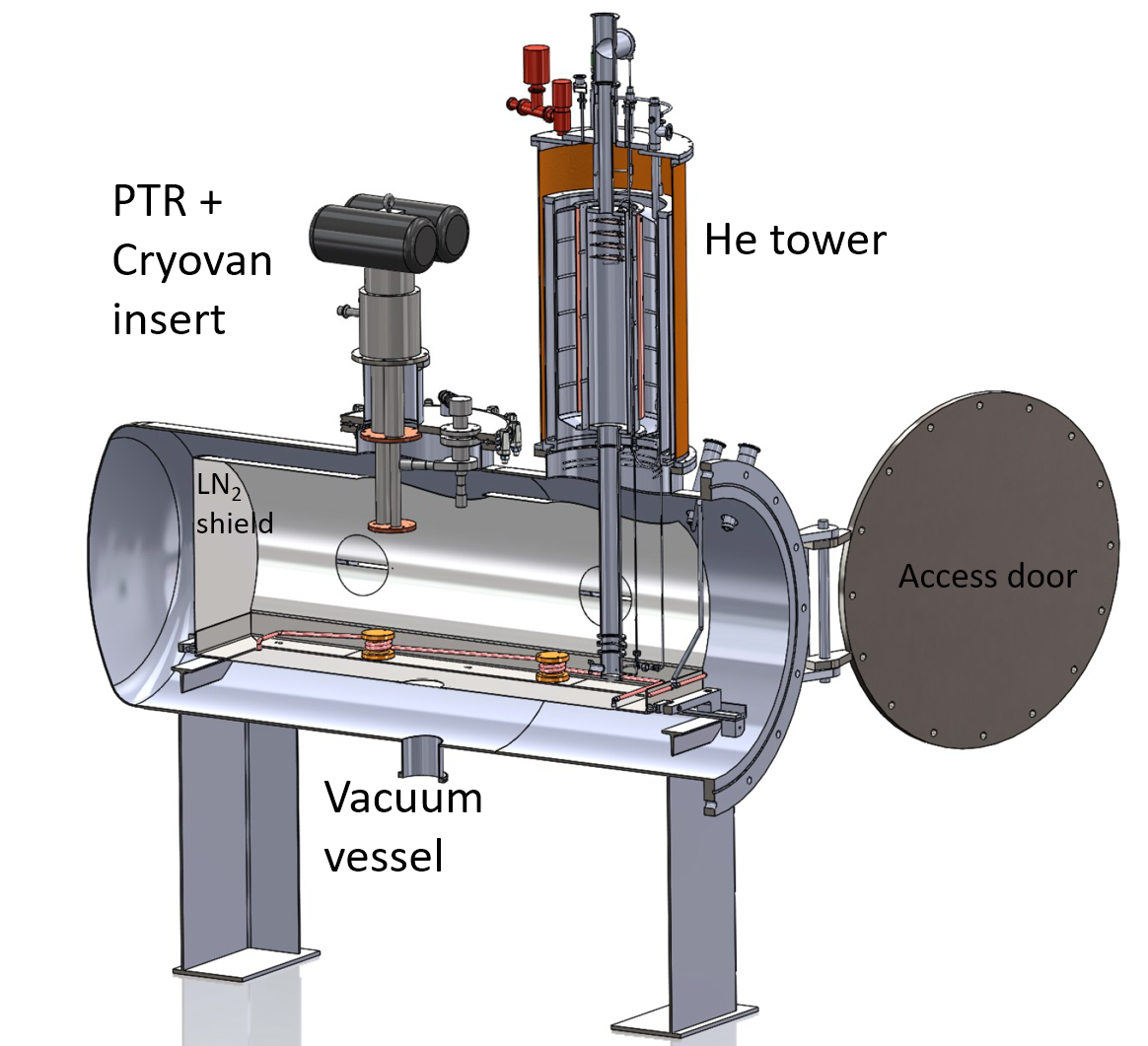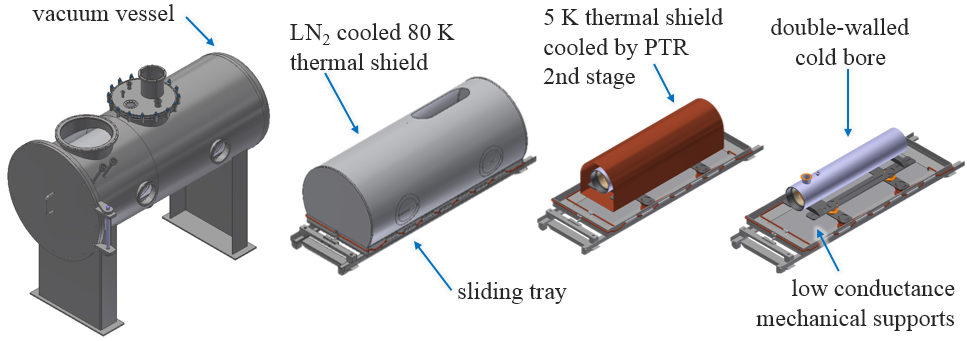HL-LHC beam screen thermal performance validation

A full-scale mock-up test stand to test the thermal performance of the new Tungsten based beam screens for HL-LHC was tested. The horizontal test stand mimics all temperature and cooling fluid conditions as they will be present in the real HL-LHC application. This includes a LN2 cooled thermal screen, a LHe 4.2 K reservoir, two He II baths one at saturated He II conditions as a cooling source and the second one cooling the beam tube at pressurised He II condition (T=1.9 K and p=1.1 bar). The test stand is able to determine the heat load from the Tungsten based beam screen (55 K<T<100 K) to the 1.9 K cold bore. A calibrated heat meter insures an accuracy of dQ=±5 mW for an expected heat load of Q<600 mW. The heat inleak is determined in horizontal orientation of the beam screen, ensuring that the influence of the heavy Tungsten alloy blocks to the interface heat transfer is representative of the final installation in HL-LHC.

Un banc d’essais horizontal a été conçu pour tester la performance thermique des écrans de faisceau en tungstène pour le HL-LHC. Ce banc d’essais simule les conditions réelles de température et de débits du HL-LHC. Le système inclut avec un écran thermique refroidi à l’azote liquide, un réservoir d’hélium liquide à 4,2 K et deux bains d’hélium (l’un pressurisé à 1,9 K et 1,1 bar et l’autre en conditions de saturation). Il est ainsi possible de déterminer le transfert de chaleur depuis l’écran de faisceau en tungstène (55 K < T < 100 K) jusqu’à la partie centrale à 1,9 K. Un compteur de chaleur calibré mesure avec une précision de dQ=±5 mW une charge thermique de Q<600 mW. Les pertes thermiques sont déterminées avec l’écran en position horizontale, pour veiller à prendre en compte l’influence du poids de l’alliage de tungstène sur l ‘interface en jeu pour le transfert thermique dans l’installation finale du HL-LHC.
